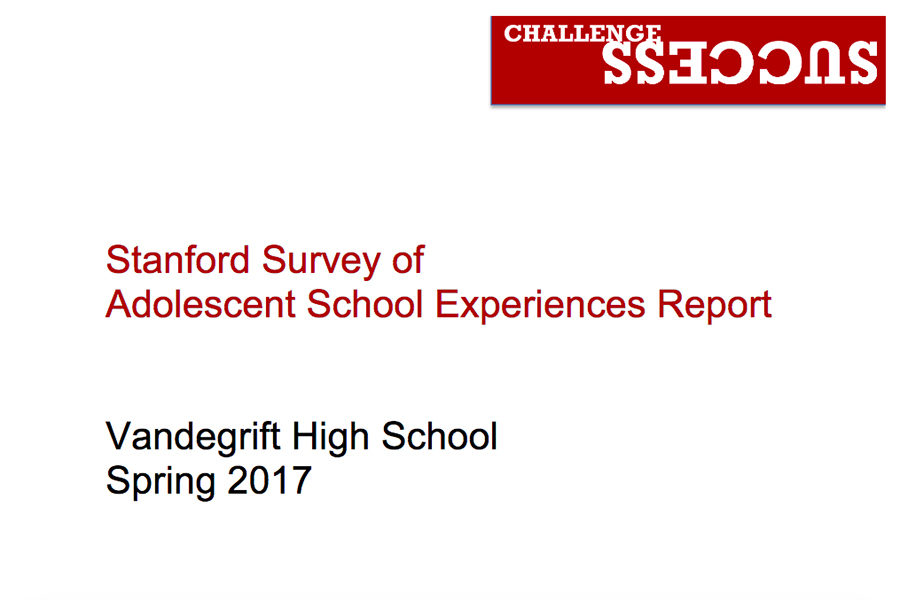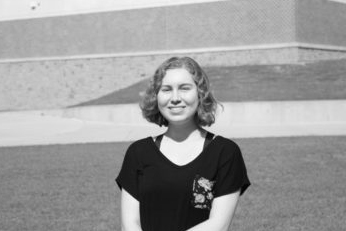Stanford Survey results create awareness for community
November 9, 2017
Last year every student at Vandegrift took the Stanford Survey. A series of questions pertaining to mental health, class workload and personal time. The results were released Oct. 2, but it was only recently that the results were passed out to a handful of teachers.
“Over the course of the last few years, I have been trying to take a temperature on where the students are at in regards to their academic stress and all their extracurricular involvement and their perceptions of how they’re doing everything and finding some life balance,” lead counselor Amy Rodriguez said. “This nationally recognized survey allows us to see what our kids are feeling, and I figured it would be better than trying to do a Google survey myself.”
The PTSA helped to pay for the survey.
“We have a balance concern, I don’t want to say problem or issue, but it’s definitely a concern with balance with work and life,” Rodriguez said. “Personally, I was concerned about the results. It was validating in the things I was seeing such as seeing them overwhelmed.”
Rodriguez stated that the things she hears in her office from students saying they’re not sleeping enough, feeling like failures and struggling to get through the day was validated as she had thought, but was happy to see that students had teachers they could trust.
“I really thought the amount of students who thought they were receiving teacher support was fantastic, which of course I would love to get it higher,” Rodriguez said. “Students are feeling like teachers care.”
Rodriguez feels like bringing awareness to the balance issue is the first step.
“It’s a big task to try to get this out to everyone and we need to allow people to be able to process this along with everything else that going on in their day,” Rodriguez said. “What I’m finding is that everyone has so much on their plate that they don’t have time to slow down and think about these things.”
Nov. 13-17 the school will observe Mental Health and Wellness Week. The school has done Mental Health Awareness Week before, but this year’s focus will be on the survey. They will piece apart the survey and hand it out in small chunks to students.
“I feel that everyone is moving through this gauntlet together because everyone feels that their thing is important and everyone is trying to make a difference in their lives,” Rodriguez said. “I feel like everyone is in the same boat, but nobody knows how to slow it down.”
Rodgriguez stated she wants to start conversations. She doesn’t want students, teachers or parents to think it’s a blame game, but instead that this is where the school is at the moment and what can be done about it in the future.
“I know that I can’t fix everyone’s problems,” Rodriguez said. “I would love to wave a magical wand and make everyone feel confident and balanced. I want people to want to see some change.”
The math department was the first to hear about the survey and met last Thursday to discuss the results.
“The math department was a bit of a tester group, so the counselor met with us and went over just the data, not so much what we were going to do with it,” Pre-Calculus teacher Kelcie Tiedeman said. “I think I hope that as teachers, the work we assign is meaningful and not just busy work all the time.”
Tiedeman said she saw much of what was mentioned in the survey in her own classroom.
“A lot of my kids tend to miss a lot for extracurriculars and they have to catch up,” Tiedeman said. “Your workload increases after school because you also have practice, and homework. It can be a lot, for everybody.”
Tiedeman believes that students need to know that it’s okay to not have all upper level classes and that the students happiness is what ultimately matters.
“Almost everyone I know is stressed with their school work,” senior Nicole Shuller said. “For me personally, I work and it’s hard with balancing my AP classes and schoolwork because of all the studying. I’m working until 9 or 10, so when I get home I’m just too tired to work on homework and it piles up. There’s a lot to do and no time to do it.”
Shuller hopes the school cuts down on some of the work given with AP classes after reading the results.
“I felt like I could have told people the results myself,” Shuller said. “It’s pretty obvious that kids are stressed. Especially for kids who are working and those that need mental health time, I hope the school fixes the amount of work.”









